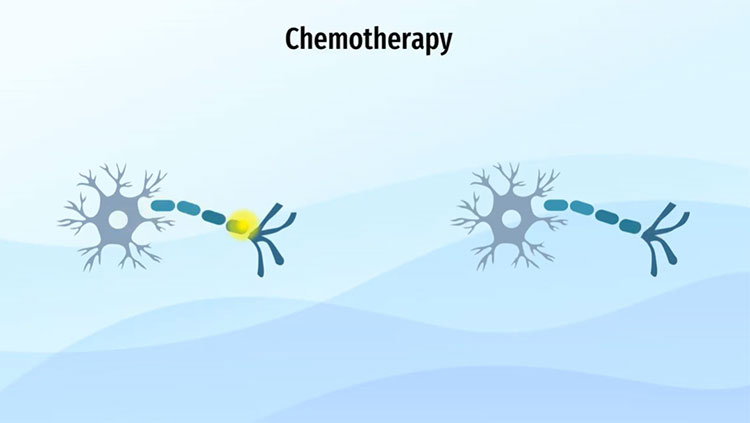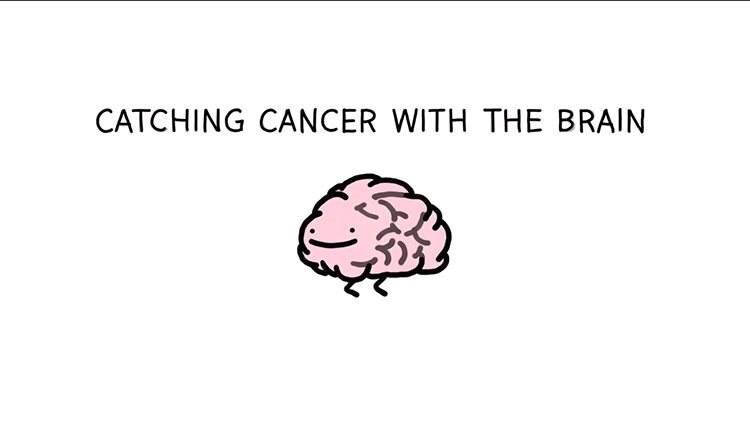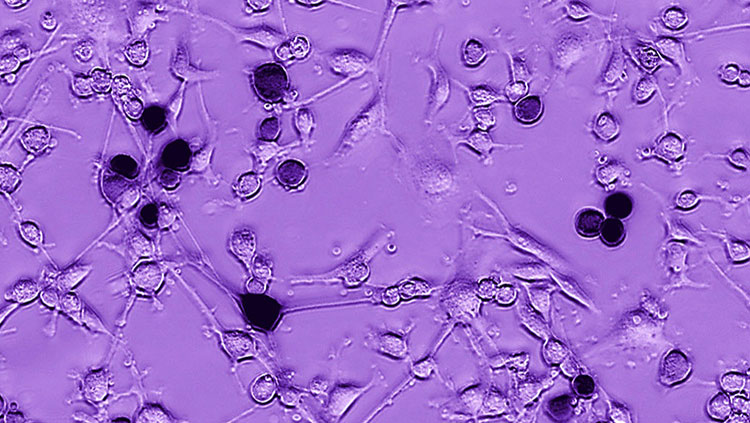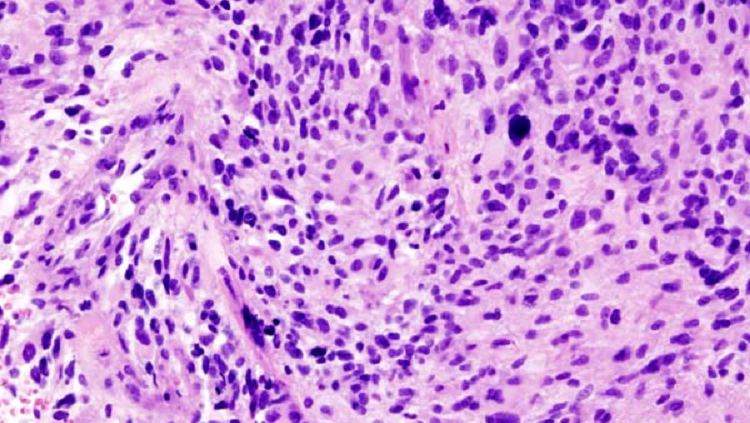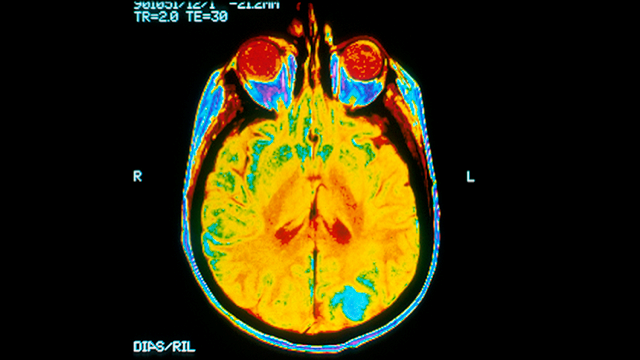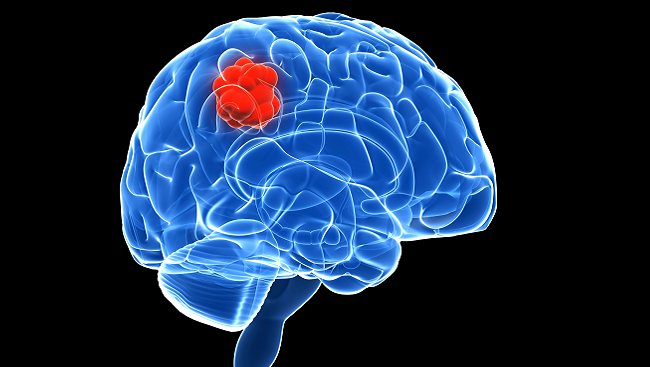Neuroscience of 'Under the Skin,' Starring Scarlett Johansson
- Published13 Jan 2015
- Author Douglas Fields
In the eerie science fiction film, Under the Skin, starring Scarlett Johansson as an alien vixen clothed in human skin, roaming the earth in search of single men for nefarious purposes, a turning point comes when she offers a hooded man on a dark road a ride in her vehicle. When the man takes off his hood we see his shockingly disfigured face. It is not make up. The disfigurement is caused by a genetic condition, neurofibromatosis, affecting actor Adam Pearson. Pearson’s brother has the same disorder, but no disfigurement. Instead he suffers memory problems. The film is a head scratcher--in the best possible way--but neurofibromatosis is not. Let’s have a look.
When Adam Pearson was a school boy he was often taunted as “Elephant Man” by bullies. In fact, one prevailing theory is that the real Elephant Man, Joseph Merrick, suffered from neurofibromatosis. A new paper by Huntley, Hodder and Ramachandran, in the journal Gene, gives a vivid account of the discovery of the Elephant Man in Victorian England, and recounts the scientific sleuthing over the last 125 years to identify the medical condition that caused Merrick to have skin and body features resembling an elephant.
Joseph Merrick was a single-case study presented to the Royal London Hospital in 1884 at the age of 21. Merrick, from Leister England, was discovered at a Freak Show by Sir Frederick Treves, Surgeon to Queen Victoria. The doctor did not routinely seek such entertainment; he went there specifically to see a man on exhibition advertised as having the features of an elephant. Treves paid a shilling to have a private viewing after hours. Sir Treves’ examination documented that Merrick had a large number of disfiguring growths all over his body that made it difficult for the man to speak, sleep or walk. Many of his bones were misshapen and his skull was grossly enlarged, and malformed. Sir Treves described Merrick as “the most disgusting specimen of humanity that I have ever seen.” (Read that with a proper British accent for full effect.)
Soon after the paper describing the case of the Elephant Man was published in 1885 in the journal Trans. Pathol. Soc. London, “A Case of Congenital Deformity,” Freak Shows in Jolly Old London were outlawed. Adding to that tragedy, Merrick was robbed of his life savings by his show manager and he ended up stranded at the Liverpool Street Station, homeless, penniless, and unable to make himself understood because of his speech impediment. The police brought him to Sir Treves, who appealed to the good-hearted public for assistance in a letter to the Times. Within one week he collected enough money to support Merrick the rest of his life at the hospital.
For the rest of the fascinating story of the real Elephant Man, and a recent determination of the medical condition that afflicted Merrick, I highly recommend this new article in the journal Gene. Spoiler alert: the authors conclude that Merrick did not have neurofibromatosis, but instead suffered from a condition called Proteus Syndrome, which is caused by a mutation in the gene PTEN. Neurofibromatosis is a genetic disorder that causes tumors to grow in the nervous system. I actually published a small paper on neurofibromatosis from research in my lab, which is as close as I expect I will ever get to Scarlett Johansson.
 The tumors in nerves cause disfigurement. As you would expect, they often cause a wide range of neurological problems, from hearing loss to learning impairment, depending on where the tumors grow and interrupt normal communication through nerve axons. Neurofibromatosis 1 (NF1) causes harmless spots on the skin and tumors under the skin anywhere on the body. Bone growth is often deformed, for example by bowed lower legs or a curved spine. Mild learning disabilities are common, as well as attention-deficit/hyperactivity disorder (ADHD), but not in all cases. The head is typically larger than normal. So there are indeed several similarities to the features exhibited by the Elephant Man, but these are only superficially similar to neurofibromatosis.
The tumors in nerves cause disfigurement. As you would expect, they often cause a wide range of neurological problems, from hearing loss to learning impairment, depending on where the tumors grow and interrupt normal communication through nerve axons. Neurofibromatosis 1 (NF1) causes harmless spots on the skin and tumors under the skin anywhere on the body. Bone growth is often deformed, for example by bowed lower legs or a curved spine. Mild learning disabilities are common, as well as attention-deficit/hyperactivity disorder (ADHD), but not in all cases. The head is typically larger than normal. So there are indeed several similarities to the features exhibited by the Elephant Man, but these are only superficially similar to neurofibromatosis.
Neurofibromatosis 2 (NF2) also causes nerve tumors by unregulated growth of Schwann cells, the glial cell of the peripheral nervous system. Schwann cells form the myelin sheath that is essential for rapid impulse conduction through axons in peripheral nerves. Other Schwann cells encase bundles of slender axons that conduct impulses slowly because they lack the myelin insulation. Hearing loss and balance problems are a common but the tumors can grow in many different nerves causing a wide range of symptoms.
The NF1 gene is on chromosome 17. It normally makes the protein neurofibromin, which helps regulate cell growth. NF2 is caused by the NF2 gene located on chromosome 22. This gene produces the protein merlin, which also controls cell growth.
In either case, you need to inherit only one copy of the mutant gene to get the disorder (autosomal dominant), which means that if you have neurofibromatosis there is a 50:50 probability that your offspring will inherit the disease.
“My kids are going to be genetically awesome anyway,” Pearson says displaying the spunk that has made him a successful actor in a major film. “Now that I’ve appeared nude with Scarlett, I want to be a Bond Villain,” he says. Pearson is also a supporter of the charity Changing Faces which supports people who have medical conditions or injuries that affect their appearance by helping them cope with life. Fundamentally, the coping techniques are to help such people deal with other people’s prejudices and societal reactions to those who are disfigured by burns, injuries, or genetic deformities. In the movie, the moment when the female alien in human skin meets the character played by Adam Pearson the plot turns, because like the alien herself, the real person who is Adam Pearson, is to be found under the skin.
***Coda***
After my scathing reviews* debunking the inane science fiction movie Lucy, starring Scarlett Johansson, it is nice to have this opportunity to endorse Under the Skin. People either love or hate Under the Skin. This can be explained by the fact that Lucy is a movie, but Under the Skin is a film. A film is a work of art. Art presents captivating and thought-provoking images and performances, left to interpretation by the viewer. Art transcends language in illuminating humankind and the natural world. Under the Skin exposes core issues of sex, gender roles, what it is to be human, and inhuman, but it does it in a way that requires the viewer to bring to the performance their own elusive perceptions, intrinsic beliefs, and fantasies that lie beneath the surface of thought.
For a good review of this film I recommend:
Seitz, M.A. (2014) Under the Skin Movie Review. www.rogerebert.como/reviews/under-the-skin-2014
--* Fields, R.D. (2014) Cinema Peer REview: Douglas Fields Reviews ‘Lucy’ World Science Festival, July 29, 2014 http://www.worldsciencefestival.com/2014/07/cinema-peer-review-lucy/
*Fields, R.D. Lucy Debunked, Science Friday, August 8, 2014 http://www.sciencefriday.com/guests/r-douglas-fields.html#page/full-width-list/1
References
Changing Faces http://www\changingfaces.org.uk
Day Elizabeth (2014) How Scarlett Johansson helped me challenge disfigurement stigma. The Guardian, April 12, 2014.
Huntley, C., Hodder, A., and Ramachandran (2015) Clinical and historical aspects of the Elephant Man: Exploring the facts and the myths. Gene 555:63-65.
Pearson, A. (2014) ‘Now that I’ve appeared nude with Scarlett, I want to be a Bond villian’: TV’s Beauty and the Beast star hopes to beat prejudice after big-screen debut. Daily Mail, March 29, 2014.



